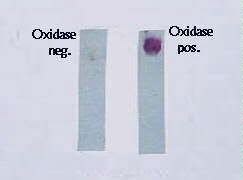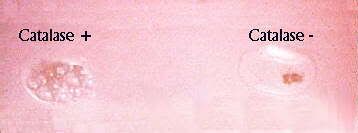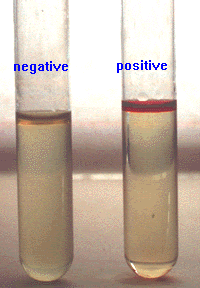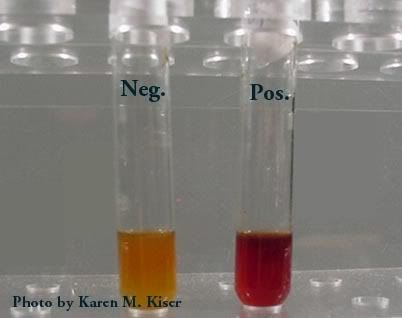For this week, I am going to elaborate on some of the keywords mentioned in my previous entry and in addition, suspected micro-organisms will also be listed down, including the tests to be done and the expected results.
(a) Urethritis
Urethritis is inflammation of the urethra from any cause, which may include bacteria or a virus. The same bacteria that cause UTI (E. coli) and some sexually transmitted diseases (chlamydia, gonorrhea) can lead to urethritis. Viral causes of urethritis include herpes simplex virus and cytomegalovirus.
Source: (http://www.nlm.nih.gov/ > Medline > Medical Encycopedia > U > Urethritis)
(b) Cystitis (Recurrent)
Recurrent cystitis consists of at least 2 infections of the bladder in 6 months, or 3 infections in 1 year. It is confirmed by tests that show the growth of bacteria in the urine.Recurrent cystitis is most often caused E. coli, the leading cause of all UTIs. About 25-50% of all young, healthy women who suffer their first infection will develop a second one within 6 months. Although the risk for cystitis increases with age, the incidence of recurrent infections is only about 10-20% for people over 60.
Source: (http://www.nlm.nih.gov/ > Medline > Medical Encycopedia > Cp-Cz > Recurrent Cystitis)
(c) Pyelonephritis
Pyelonephritis is an infection of the kidney and the ducts that carry urine away from the kidney (ureters). It often occur as a result of UTI particularly in the presence of occasional or persistent backflow of urine from the bladder into the ureters or kidney pelvis.
Source: (http://www.nlm.nih.gov/ > Medline > Medical Encycopedia > Pm- Pz > Pyelonephritis)
(d) Asymptomatic UTI
When a person has no symptoms of infection but significant numbers of bacteria have colonized the urinary tract, the condition is called asymptomatic UTI (also called asymptomatic bacteriuria). (In general, there must be at least 100,000 bacteria per milliliter of urine.) The condition is harmless in most people and rarely persists, although it does increase the risk for developing symptomatic UTIs. Asymptomatic bacteriuria may be an indicator for serious health problems in the elderly, but screening for the condition is not warranted in this group.
(e) Complicated UTI
Complicated infections, which occur nearly as often in men as women, are also caused by bacteria but they occur as a result of some anatomical or structural abnormality. Often they are associated with catheter use in the hospital setting, bladder and kidney dysfunction, or kidney transplant (especially in the first three months after transplant). Recurrences occur in up to 50% to 60% of patients with complicated UTI if the underlying structural or anatomical abnormalities are not corrected.
Source: http://www.morehead.org/wellconnected/000036.htm
The micro-organisms suspected are Escherichia coli ( E. Coli) and Proteus Mirabilis respectively.
(1) Escherichia Coli
E. coli are facultatively anaerobic gram-negative rods that live in the intestinal tracts of animals and humans . They can grow in the presence or the absence of oxygen. Under anaerobic conditions, E. coli grow by fermentation, producing mixed acids and gases as end products. They can also grow by anaerobic respiration, utilizing NO3, NO2, or fumarate. This versatility is what gives E. coli its ability to adapt to its intestinal (anaerobic) and its extraintestinal (aerobic or anaerobic) habitats.
Source: (http://www.answers.com/main/ > Directory > Health > Encylcopedia of Health > E.Coli)
(1.1) Tests/ Expected Results
- Methly Red Positive and VogUes-Proskauer Negative
- Oxidase Negative
- Catalase Positive
Oxidase Test, Catalase Test
Source: http://biology.fullerton.edu/biol302/302labf99/biochem.html
(2) Proteus Mirabilis
Proteus Mirabilis is a Gram- Negative, facultatively anaerobic bacterium. It shows swarming. motility and urease activity. P. mirabilis causes 90% of all 'Proteus' infections. It belongs to the Tribe Proteae.
(2.1) Diagnosis
An alkaline urine sample is a possible sign of P. mirabilis, which can be diagnosed in the lab due to characteristic swarming motility, and inability to metabolize lactose.
(2.2) Characteristics
P. mirabilis can utilize Urea and Citrate. It can produce Hydrogen Sulfide gas, and forms clear films on growth media. It is motile, possessing peritrichous flagella, and is known for its swarming ability. It is commonly found in the intestinal tract of humans.
(2.3) Tests/ Expected Results
- Indole Negative and Nitrogen Reductase Positive
- Methyl Red Positive and Vogues-Proskauer Negative
- Catalase Positive and Cytochrome Oxidase Negative
- Phenylalanine Deaminase positive
Source: (http://www.answers.com/main/ > Directory > References > Wikipedia > Proteus Mirabilis)
Indole Test, Methyl Red, Vogues- Proskauer (in order)
JUSTIFICATION
E. Coli accounts for <= 70% of bacteriuria in elderly female outpatients with uncomplicated sporadic cystitis and for about 40% in patients with indwelling bladder catheters, complicated infections, or nosocomial infections. P.mirabilis are more common in men than in women because these species tend to dominate the normal aerobic preputial flora.





2 comments:
Farhan
U indicated that
1) Majority of female patients are infected by E. Coli
2) Proteus mirabilis tend to infect male patient than female
Does that suggest the most probable microorganism in this case is Proteus mirabilis? Since the patient is a male.
Hello Jane and Farhan!
Sorry for the late reply.
Regarding your question right, E.Coli is the most common organism that causes UTI since it is non- fastidious and the female urinary tract provides an ample and suitable condition for the growth of E.Coli.In addition, E.Coli has no growth factor requirement as well.
As for Proteus Mirabilis, it is very simliar to E.Coli and somehow mimics the characteristics of E.Coli.
Furthermore, the patient has indwelling catheter which is characteristical of both Proteus Mirabilis and E. Coli although the indwelling catheter is more prominent in Proteus Mirabilis than in E.Coli.
As for farhan right, yes Proteus Mirabilis tends to infect male patients then female but this does not mean that the female patients are not infected. It is just that the probability of infection in males is higher than that of females. Therefore, there is still a chance of E.Coli infection in the patient in this case.
Hope these answer you guys!
Posted by Winnie =)
Post a Comment